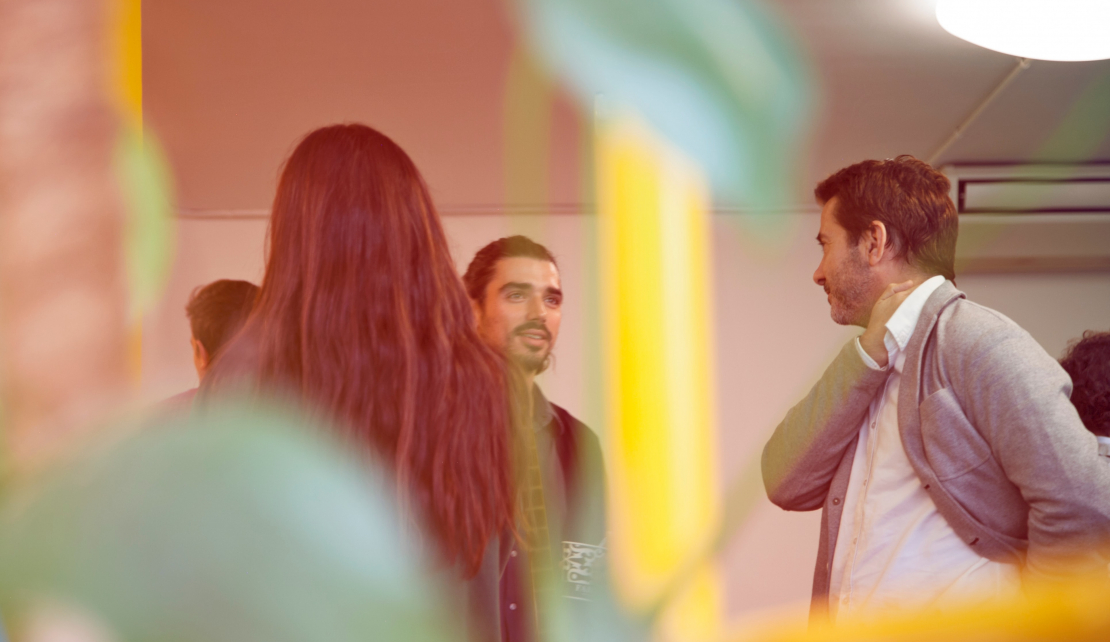The word intermediary is not a particularly inviting term but the idea of ‘an entity or facilitator that sits in the middle’ is becoming core to how young people and employers can meet each other through a new pattern of engagement. Both have hopes and dreams about working together and both need the relationship to be pragmatic and flexible.
The relationship intermediaries are fostering between young people and employers is scaffolded by a mutual acknowledgement also shared by many educators and recruiters - that the best learning experiences don’t need to rely on one entity (the school, the young person or the employer alone) to do the heavy lifting while the others tag along.
Learning can be considered (and is being described) as a series of interconnected parts or moments. These moments can be joined together to become an intentional pathway. Young people gain a lot from fine-grain experiences while employers are spared the resource intensive infrastructure that is often hard to maintain. Graduate and other education programs that take years to build abound, and are fundamentally important but many sit forever in a separate sphere of learning and actually limit the idea that learning can happen in the flow of work. Not every young person is able to access a formal program and not all employers can set them up.
This idea of building touchstones for learning at work, is one that Beacon Foundation have been involved in for decades, as an intermediary organisation working to bring better relationships between young people and employers to life.
Kath McCann, Chief Operating Officer of Beacon Foundation, based in Tasmania puts it like this:
‘Appropriately resourced intermediaries can work between industry, business, schools and students to create meaningful work-based learning opportunities for young people. The types of activities that can be put in place can create great information, engagement and inspiration opportunities for young people, as well as opportunities for industry to consider the skills, talents and attributes of the young people in a manner other than a formal recruitment process.’
While simple, there are many highly effective methods including Q+A sessions, mock interviews, well designed mentoring sessions that can lead to a better understanding of what a learning pathway could be and play a major part in raising young people’s work readiness skills as well as their aspirations to join that pathway.
For employers, it can be part of their learning journey as well - creating more meaningful connections with young people and being able to identify talent or who could be a good fit with the workplace culture - all while committing to small scale but large impact interactions.
Kath goes on to say:
‘As an intermediary we encourage young people to be aware of what a pathway might look like - even if it’s hard to see. We curate and facilitate that journey - as the connector, by working with the employer as well. We develop programs and services that allow us to take industry into the classroom or we can flip the classrooms into the workplace.’
Many employers Learning Creates spoke to about the spaces where learning happens in the flow of work described informal experiences and yet they also recognised that it’s time for these moments, interactions and observations to become more intentional or widespread - like a new norm for learning.
During the insights gathered through this paper, one of the most common challenges mentioned was the difficulty in creating both the right role fit for young people and the career growth for them within an organisation.
Many respondents valued the collaborations they built with intermediaries and the recognised the potential behind new opportunities to engage with young people directly.
One commented: ‘It can build relationships with schools and training providers... potential to be future employees and general introduction to the workforce.’
A few respondents went into a fair amount of detail around the opportunity in building a positive and sustainable work culture and workforce by investing in young people. Comments included:
‘The approach to early careers is to build a future leader pipeline.’
‘Grow and foster talent early on rather than always bringing in experienced people.’
‘Responds to an industry challenge to an aging workforce with lots of retirement on the horizon.’
Some respondents also valued the networks diverse young people bring to their business.
‘On occasion we will employ someone with a lived experience of disability, as that can be a real asset to a disability support worker. The lived experience of the staff member can often help them to connect with their client.’
‘Our Aboriginal youngster can reach and help our Aboriginal elders better
and faster.’
Several employers wondered why individual employers were pretty much left on their own to figure out how best to develop effective programs to identify, recruit and develop young people into their organisations. Would there be merit in common platforms of advice and assistance for other organisations to speed up, and strengthen, the development of better ways to improve engagement with younger workers?
Kath from Beacon relates this feedback to how an intermediary can help:
‘Evidence shows that four or more meaningful workforce engagements will lead to an increase in likelihood of a meaningful pathway outcome for a young person. A site tour, mentoring, work readiness activities, work experience - or combination of multiple methods create great work-based learning touchpoints for young people. These types of activities help raise work readiness skills to make young people more confident and more attractive to an employer. The role of an intermediary is to assist in building, facilitating and delivering these connections and experiences for young people and industry.’
It’s fair to acknowledge that it’s not possible to expect every school to offer these interactions. They often don’t have the capacity to catalyse new relationships on their own. Employers also struggle to access schools. The role of the intermediary is to materially shift that gap in a way that can create multiple meaningful, tangible engagement for both.
Dave Burton from LLEN agrees: ‘There is a significant opportunity for the expanded role of intermediaries bridging schools and employers across Australia. The expert intermediary in the middle can go further to create positive outcomes for young people in a way that reflects the current employment landscape. We need to understand the elements that an intermediary can work with and make them part of how we recognise what is happening when a young person makes a connection with a workplace. Too many of these interactions get lost in translation.’
Annette Cairnduff from Learning Creates further explains:
‘We know that young people bring a range of skills and talents with them into different work environments - but the challenge for employers is packaging the opportunities for learning in a way that is accessible to young people. If employers don’t have time to think about that, an intermediary can provide those connections - turning the informal into valuable and measurable instances of learning that can lead to a job that benefits both parties. Bringing a recognition lens to make these interactions part of our system of learning is key to ensuring we all get to experience relationships with employers, not just those who have a network or can find a formally recognised program.’
--
This article is part of a series Stories about now that was released in our Discussion Paper Shifts and Flows in Learning and Work which explored the changing relationship between employers and young people. You can access the full report here: https://www.learningcreates.org.au/findings/discussion-paper-shifts-and-flows-in-learning-and-work




